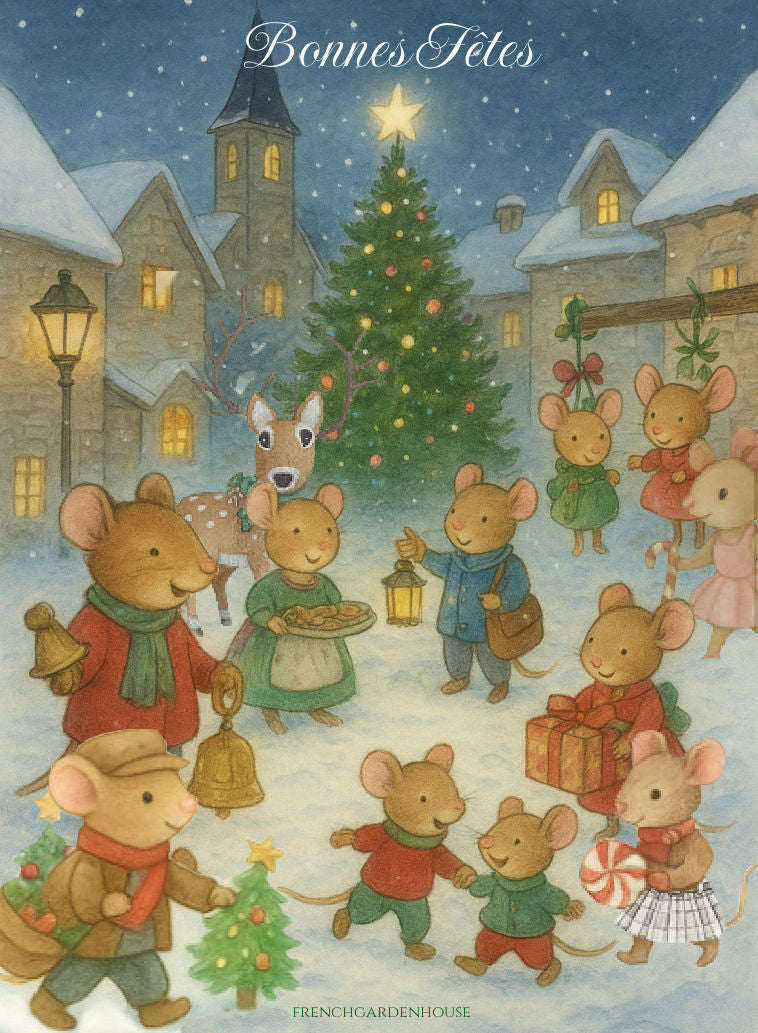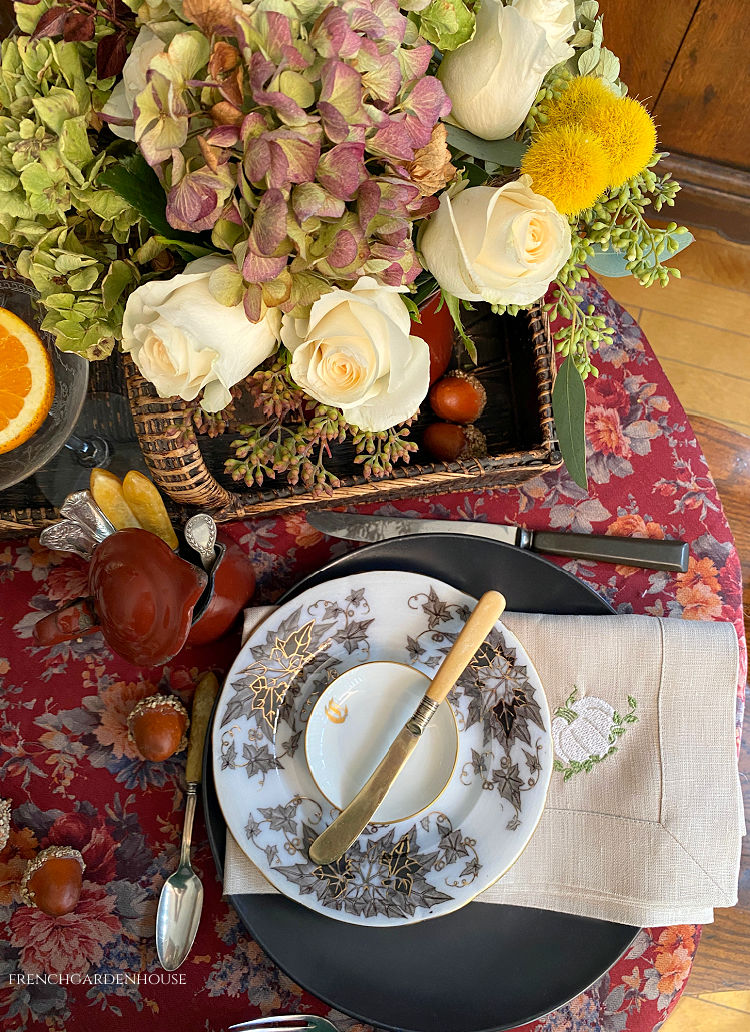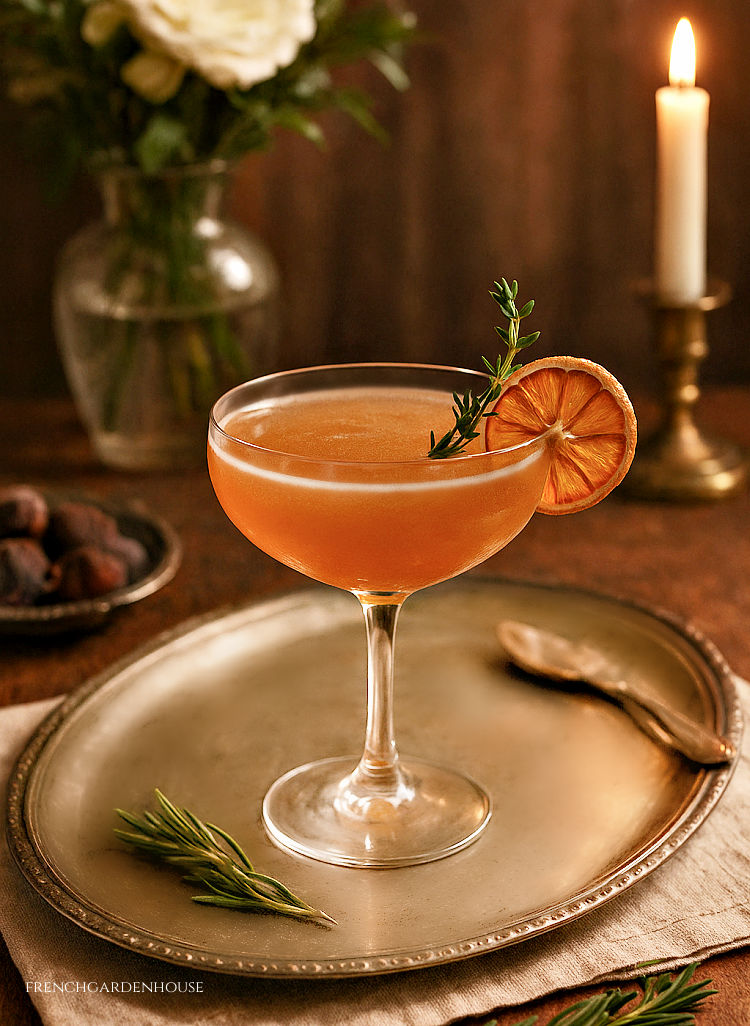The Secret Life of Antiques | Open Salts
November 08, 2016 3 min read 27 Comments

 Our farm-to-table aesthetic has us abandoning salt and pepper shakers in favor of more trendy open salts or salt cellars. The most discerning cooks and hostesses these days use coarse, gourmet salts from all over the world, do you?
Not just for setting gorgeous tables, salt cellars, or dips as collectors sometimes call them, is a fun collection to begin! There are many different kinds, and they all fit neatly into a little case, display shelf, or in a small cabinet, which makes this a collection every one of us can have. AND...then there is the fact that they bring so much personality to your table settings.
I'm sharing my story that I wrote for the Romantic Homes Magazine Holiday Edition with you today. Salt...who knew it played such an important part in history?
Our farm-to-table aesthetic has us abandoning salt and pepper shakers in favor of more trendy open salts or salt cellars. The most discerning cooks and hostesses these days use coarse, gourmet salts from all over the world, do you?
Not just for setting gorgeous tables, salt cellars, or dips as collectors sometimes call them, is a fun collection to begin! There are many different kinds, and they all fit neatly into a little case, display shelf, or in a small cabinet, which makes this a collection every one of us can have. AND...then there is the fact that they bring so much personality to your table settings.
I'm sharing my story that I wrote for the Romantic Homes Magazine Holiday Edition with you today. Salt...who knew it played such an important part in history?
 History
Salt is something we take for granted, but at one time salt was highly prized, quite expensive and worthy of the most elaborate holders.
Historically salt was more a commodity than a condiment. Salt was used as currency at various times and places, symbolic of social and economic standing, it has even been the cause of bitter warfare. Salt has a rich history, from the Middle Ages up to the Industrial Revolution salt was crucial to farmers to preserve meat through the winter, safeguarding against famine.
According to historical records, thousands of Napoleon’s troops died during his retreat from Moscow simply because their wounds wouldn’t heal due to lack of salt in their diet. The punitive gabelle, a French salt tax, is thought to have contributed to the French Revolution.
History
Salt is something we take for granted, but at one time salt was highly prized, quite expensive and worthy of the most elaborate holders.
Historically salt was more a commodity than a condiment. Salt was used as currency at various times and places, symbolic of social and economic standing, it has even been the cause of bitter warfare. Salt has a rich history, from the Middle Ages up to the Industrial Revolution salt was crucial to farmers to preserve meat through the winter, safeguarding against famine.
According to historical records, thousands of Napoleon’s troops died during his retreat from Moscow simply because their wounds wouldn’t heal due to lack of salt in their diet. The punitive gabelle, a French salt tax, is thought to have contributed to the French Revolution.
 The salt container marked the boundary line on the table between honorable land owners and the "common" guests. This is how the English term "below the salt" was born, indicating someone of little or no social importance. For centuries salt was carefully placed on the table in dishes with a tiny salt spoon, in just the "right” place!
The salt container marked the boundary line on the table between honorable land owners and the "common" guests. This is how the English term "below the salt" was born, indicating someone of little or no social importance. For centuries salt was carefully placed on the table in dishes with a tiny salt spoon, in just the "right” place!
 Because salt was such an expensive commodity hundreds of years ago, salt was seen as a luxury, worthy of the most precious and fashionable holders, well into the early 1900’s.
Because salt was such an expensive commodity hundreds of years ago, salt was seen as a luxury, worthy of the most precious and fashionable holders, well into the early 1900’s.
 What to Collect
Vessels made to hold salt have always been created with great skill. Very early examples are plain, crafted of the finest silver or gold, in triangular, octagonal, or circular shapes. By the end of the 1700’s, these unassuming salt containers became elaborate, sophisticated pieces to grace the tables of the rich with their beauty and usefulness. Open salts became more streamlined again in the 1920’s, stunning art deco glass salts from Czechoslovakia with alluring etched designs being the most collectable.
What to Collect
Vessels made to hold salt have always been created with great skill. Very early examples are plain, crafted of the finest silver or gold, in triangular, octagonal, or circular shapes. By the end of the 1700’s, these unassuming salt containers became elaborate, sophisticated pieces to grace the tables of the rich with their beauty and usefulness. Open salts became more streamlined again in the 1920’s, stunning art deco glass salts from Czechoslovakia with alluring etched designs being the most collectable.
 Open salts come in a vast variety of designs, and a range of sizes, from large shared bowls to small individual dishes. Salt cellars were made in gold, sterling silver, crystal, glass, porcelain, and pottery, designs were simple to extremely ornate. Glass salt cellars, known as salt dips by collectors, are available in a variety of shapes, sizes and colors. Some collectors only collect one type of open salt, some collect all the salts they love. There are also a legion of collectors who only collect the diminutive salt spoons.
Open salts come in a vast variety of designs, and a range of sizes, from large shared bowls to small individual dishes. Salt cellars were made in gold, sterling silver, crystal, glass, porcelain, and pottery, designs were simple to extremely ornate. Glass salt cellars, known as salt dips by collectors, are available in a variety of shapes, sizes and colors. Some collectors only collect one type of open salt, some collect all the salts they love. There are also a legion of collectors who only collect the diminutive salt spoons.
 What to Look For
Look for salts that are in good condition. Sterling salts may have slight indentations, due to their high silver content, which is acceptable if not considerable.
Most silver salt cellars come with fitted glass liners, as salt is terribly corrosive to metal. {Many silver salts were plated in gold inside, as gold does not corrode.} Try to purchase silver salts with their original liners.
What to Look For
Look for salts that are in good condition. Sterling salts may have slight indentations, due to their high silver content, which is acceptable if not considerable.
Most silver salt cellars come with fitted glass liners, as salt is terribly corrosive to metal. {Many silver salts were plated in gold inside, as gold does not corrode.} Try to purchase silver salts with their original liners.
 Avoid crystal or glass open salts with chips or cracks, but don’t be worried if there are a few “lines” in the early glass salts. Known as “straw marks”, early glass was cooled in straw and will sometimes have marks.
There are no rules to collecting open salts. Collect what you love, salt cellars are beautiful to display when you are not using them at your table. Salt cellars combine the history of antiques with their usefulness and beauty, it’s no wonder collectors and antique enthusiasts want to purchase at least one!
Avoid crystal or glass open salts with chips or cracks, but don’t be worried if there are a few “lines” in the early glass salts. Known as “straw marks”, early glass was cooled in straw and will sometimes have marks.
There are no rules to collecting open salts. Collect what you love, salt cellars are beautiful to display when you are not using them at your table. Salt cellars combine the history of antiques with their usefulness and beauty, it’s no wonder collectors and antique enthusiasts want to purchase at least one!
 ** Salt is terribly corrosive. Be sure to empty out and clean your open salts after each use.
I hope you enjoyed learning more about the history of salt...and those little holders and spoons. They range from the inexpensive, to the better, sterling silver examples. A mis-matched collection is sure to add personality to your tabletop and spark conversation! Would you use little salt cellars?
** Salt is terribly corrosive. Be sure to empty out and clean your open salts after each use.
I hope you enjoyed learning more about the history of salt...and those little holders and spoons. They range from the inexpensive, to the better, sterling silver examples. A mis-matched collection is sure to add personality to your tabletop and spark conversation! Would you use little salt cellars?
 Be sure to PIN this to your Pinterest Board and FOLLOW ME THERE for holiday inspiration!
Be sure to PIN this to your Pinterest Board and FOLLOW ME THERE for holiday inspiration!
27 Responses
VALERIE MAGNUSON
June 08, 2020
there is an interesting book, “Below the Salt” by t Costaine- It was written some time ago- In essence a person could determine their status by how close they were to the salt-I have collected salts for many years and am fortunate to own approximately 1000 – I found your article most interesting-
Judith Rosenbaum
March 30, 2020
As a long-time collector of open salts, I was delighted to read your article and particularly pleased to note the interest shown by your readers. If I may, I’d like to inform your followers that there exists a network of salt collecting groups here in the states, under the guidance of the National Open Salt Collectors organization. As a starting point, those interested in finding more information should visit Facebook and search for “Open Salt Collectors of the World”. We are currently creating a new website and hope to have it “go live” shortly.
Mary-the boondocks blog
November 12, 2016
These are so beautiful. I would love to have these at a formal table. They are works of art in and of themselves.
Maria Brittis
November 10, 2016
How classy, Boy your home must be amazing during dinner time, thanks for the inspiration. Very unique story! I have lots of sterling silver and nothing for salt.
Hugs
Maria
Debrashoppeno5
November 10, 2016
This was so interesting. The salts are simply gorgeous. And I can see using them in others ways besides just salt.
Lidy
November 10, 2016
So funny! Thank you for the visit…and I hope you get an amazing Salt Cellar for Christmas!!
mreynolds97@cogeco.ca
November 10, 2016
What an interesting history! I had no idea the value salt held. I must show my husband this post, as I have a salt cellar on my wish list for Christmas and he looked at me like I had two heads!
Lidy
November 09, 2016
Rita! I LOVE that…what a great idea, and how fun, salt with local flavor…perfect.
Lidy
November 09, 2016
Florence, I did write this article in the Holiday Romantic Homes Article…it’s out NOW! Thanks for visiting me today. xo
Rita C. at Panoply
November 09, 2016
Like so many of your offerings, Lidy, they are beautiful, and such a rich history! We have a local family, 7th generation, who recently reinvigorated a salt-making process from the salt they are extracting from beneath the Appalachian Mtns on their land. It has become my go-to hostess gift, now with regional flavoring of ramps as just one option! Yes, I would use them, of course!
Terri
November 09, 2016
I am in love with these pieces! The history is fun too!
FLORENCE @ VintageSouthernPicks
November 09, 2016
What an interesting history of salt cellars! I knew some of it, but not all of it. This would make a nice reference article about them.
Florence (Blogging Fifty)
Patti
November 09, 2016
Hi Lidy,
Your collection is gorgeous. Thanks for the history lesson. I love to antique shop with my girlfriends so now I have something new to search for. Thanks. Pinning.
Lidy
November 09, 2016
These little bits of history bring much to the table, usefulness, beauty, and conversation sparking, Denise!
Denise in SC
November 09, 2016
Very interesting! I think I need to start a new collection….
Shirley@Housepitality Designs
November 09, 2016
THANKS FOR THIS MOST INFORMATIVE HISTORY OF SALT. THE SALT CELLARS ARE EXQUISITE…NOW I SHALL BE ON THE LOOKOUT FOR THE CRYSTAL AND SILVER ONES. LOVE THEM…I HAVE SOME THAT ARE DEPRESSION ERA SALT CELLARS.
Lidy
November 08, 2016
I LOVE that, Ginger! What a special way to remember your father, and the veterans, too.
Ginger Valdes
November 08, 2016
Love this historic refresher. I use sake cups that my father brought home from his military time in WW2. Unfortunately the sake container somehow didn’t make it through the years, but every time I grab a pinch of coarse kosher salt, I think of him, and all the veterans, especially from "the greatest generation " for the freedom we enjoy today, to vote, to disagree, and express our views. Happy Veterans Day and thanks to those for their service. And thanks to you for another great post, Lidy
Ginger
Lidy
November 08, 2016
Susan, the history of salt is so interesting, isn’t it? The word salary came from “salt”, dating back to the time that soldiers {Rome? forgot just now} got paid in salt! How things have changed…
Taste of France
November 08, 2016
Yes, we have several salt containers, and we use them for chunky sea salts. I was going to note that we have wooden, bone and ceramic spoons, never metal.
Another history note: the word “salary” comes from salt.
Lidy
November 08, 2016
Thank you Nancy. Yes, I do everything myself, that way I can always have the rights to the photographs.
Nancy Bailey
November 08, 2016
Lidy, I so look forward to your Blog! This history on salt was very interesting and the photographs of the various salt cellars were enough to cause me to start my quest on a new collection! Do you do your own set-ups and photography?
LA CONTESSA
November 08, 2016
I DO and have many!!!!!
Summer
November 08, 2016
Such beautiful treasures.
Lidy
November 08, 2016
Thank you friend! It’s always a joy to hear from you. I agree, those little salts are fun to add to your table or collect!
Shannon@ Belle Bleu Interiors
November 08, 2016
Lidy, I enjoyed your post this morning. I loved the history and antique lesson behind the open salts. I think I may have to start a new collection. There are some very pretty ones that would be perfect in a kitchen vignette. I hope that you have a wonderful day!!!
Leave a comment
Comments will be approved before showing up.
Subscribe
Sign up to get the latest on sales, new releases and more …

🎄 A Christmas in the Village of Les Petits Souris
November 04, 2025 5 min read
Discover the enchanting story of Les Petits Souris—the felted mice of FrenchGardenHouse, they make a whimsical French village come alive at Christmastime.

Thanksgiving Breakfast for Two: Elegant French Country Antique Table Setting
November 03, 2025 5 min read 10 Comments
Create a cozy Thanksgiving breakfast for two with French antiques, seasonal blooms, and a touch of European charm.

The FrenchGardenHouse Autumn Cocktail
October 29, 2025 2 min read 4 Comments
Celebrate Thanksgiving with my signature FrenchGardenHouse Autumn Cocktail—Calvados, pear, and honey thyme—paired with baked Brie and figs for timeless French elegance.

Gary Nelson
June 09, 2020
This is a beautiful site, with a wonderful selection of great looking salts.